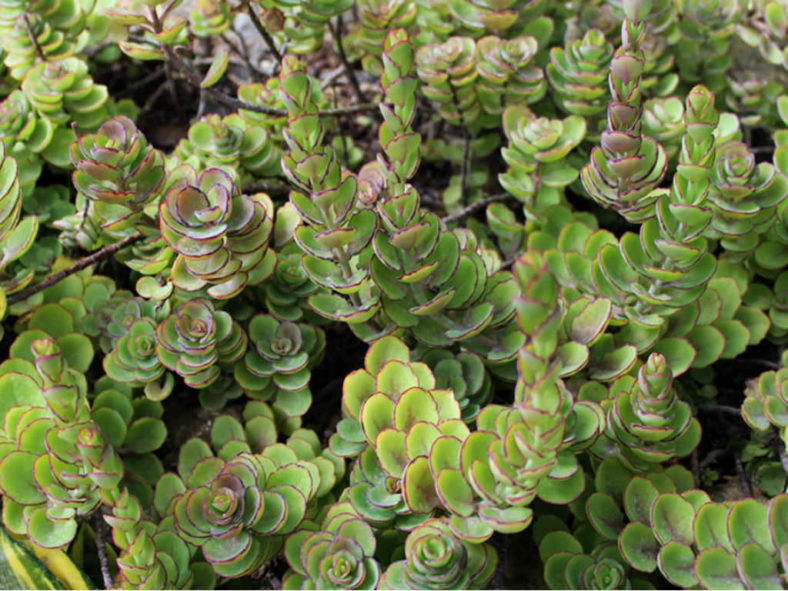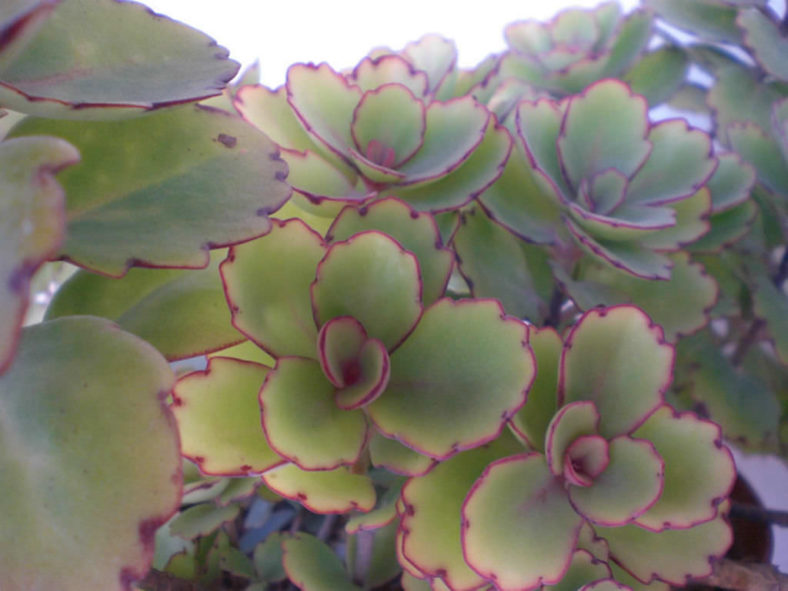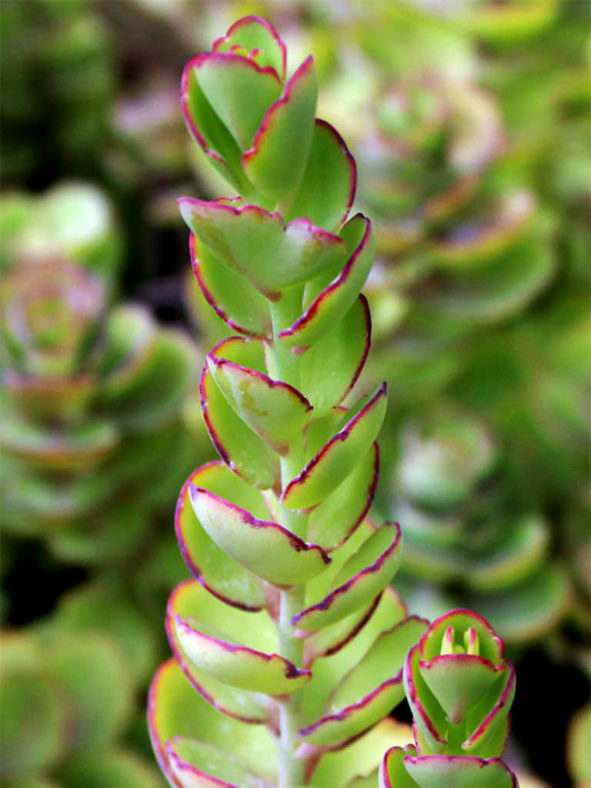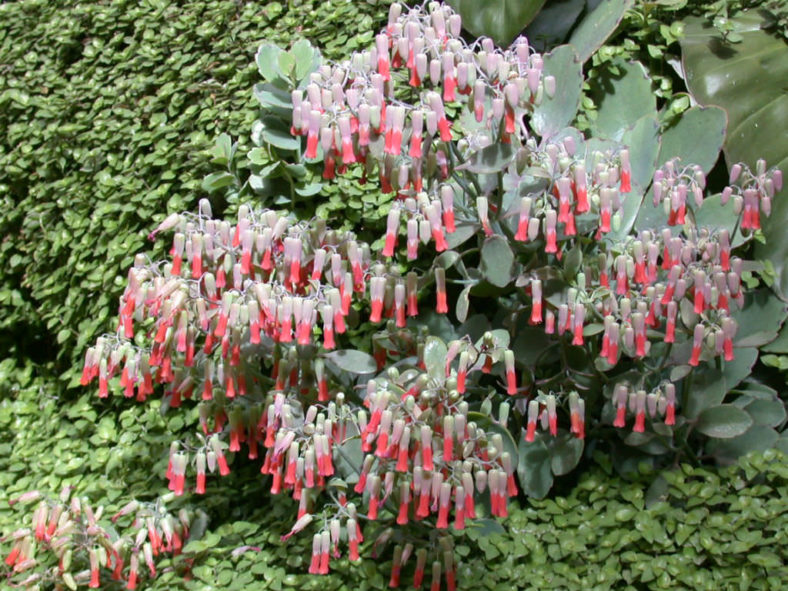Scientific Name
Kalanchoe laxiflora Baker
Common Name(s)
Milky Widow's Thrill
Synonym(s)
Bryophyllum laxiflorum, Kalanchoe laxiflora subsp. laxiflora, Kitchingia laxiflora
Scientific Classification
Family: Crassulaceae
Subfamily: Sedoideae
Tribe: Kalanchoeae
Genus: Kalanchoe
Origin
Kalanchoe laxiflora is native to central Madagascar. It grows on rocks.
Description
Kalanchoe laxiflora is a succulent shrub with erect, woody stems and fleshy, green to bluish-green leaves, generally red-edged and sometimes with brown or red spots. It can grow up to 20 inches (50 cm) tall, branching from the base. The flowering stems are initially prostrate at the base and rooting, then ascending. The leaves are egg-shaped with conspicuously crenate margins and can measure up to 2.4 inches (6 cm) in length and 1.4 inches (3.5 cm) in width. They are attached to the stem by a petiole that can be up to 2.4 inches (6 cm) long.
The flowers are pendulous, tubular, with a yellow-green to orange-red or violet calyx and reddish-purple, red, rose, orange-red, orange-yellow to pale yellow petals. They can reach a length of 0.8 inches (2 cm) and appear in spring in dense clusters on stalks that can grow up to 20 inches (50 cm) long.

Hardiness
USDA hardiness zones 9b to 11b: from 25°F (-3.9°C) to 50°F (10°C).
How to Grow and Care
Kalanchoe care is minimal, but be cautious about light levels. Intense sunlight can burn the tips of the leaves. Place pots in partial sun to light shade areas when growing Kalanchoes.
The flowering varieties are highly rewarding for their colorful and long-lasting flowers. They prefer bright, sunny locations, especially in the growing season. Water moderately from fall to winter when the growth is most active. Reduce watering during the hottest summer months when the plants are mostly dormant and winter when the growth slows significantly. Let the soil surface dry out between waterings. Watch the fleshy leaves for signs of water distress. An ordinary potting soil mix is fine. Feed bi-weekly during the growing season with a liquid fertilizer, or use slow-release pellets.
These small plants require repotting every few years. When repotting, take additional care in handling as the leaves are somewhat brittle and can snap easily. Clay pots work exceptionally well for planting Kalanchoes. Ensure pots can drain well and saucers can empty easily.
Learn more at How to Grow and Care for Kalanchoe.
Links
- Back to Genus Kalanchoe
- Succupedia: Browse succulents by Scientific Name, Common Name, Genus, Family, USDA Hardiness Zone, Origin, or cacti by Genus
Photo Gallery
Click on a photo to see a larger version.


